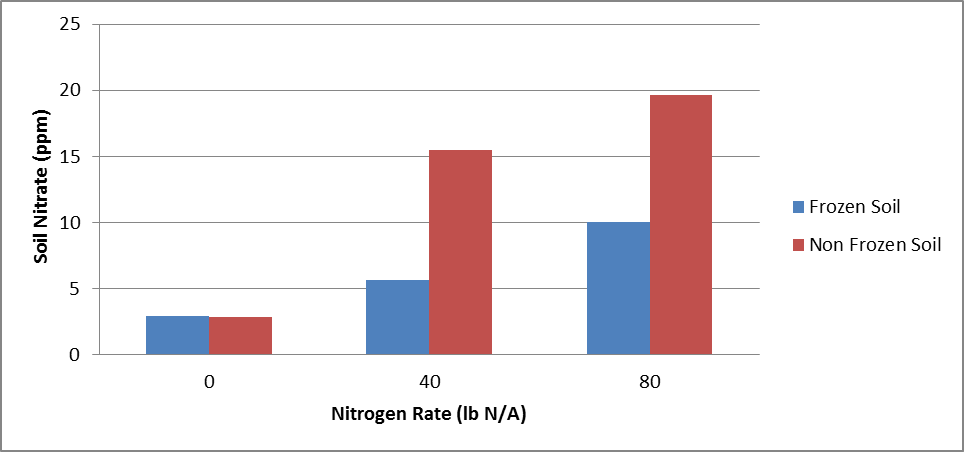Edwin Ritchey, Extension Soil Scientist-Princeton, University of Kentucky
Carrie Knott, Extension Agronomist-Princeton, University of Kentucky
Lloyd Murdock, emeritus, University of Kentucky
Unseasonably cold temperatures and frequent precipitation events this winter have presented very unique wheat management problems for Kentucky producers. The soil throughout much of Kentucky remained frozen until the end of February, which resulted in delayed wheat development. As of today, much of the state has only reached Feekes 2 or 3. This is the recommended growth stage to make the first application of nitrogen (N) for producers that utilize a split N application program for winter wheat production. Compared to most years, this represents about a 2-3 week delay in growth. Some producers began applying N on frozen ground in late January to reduce potential soil compaction issues later in the season and to provide flexibility for later management operations. Unfortunately, several rain events occurred after N application while the soil was still frozen and which increased the potential for N loss with surface runoff water.
Small plots were established at the University of Kentucky Research and Education Center (UKREC) in Princeton, KY, to determine potential N losses. Nitrogen, as NaNO3-, was applied at 0, 40, and 80 lb N/A to a frozen Crider soil with minimal slope on January 31, 2014. More than 4.5 inches of precipitation fell when the soils were frozen: about 3 inches of rain and 1.5 inches of snow and rain. The same treatments were applied after the soil thawed and drained to adjoining plots that had not received N on February 24, 2014. Soil samples were collected to a depth of 12 inches on March 11, 2014 and analyzed for nitrate-N.
About 64% of nitrate was lost at 40 lb/A rate and about 49% nitrate was lost at the 80 lb/A rate with the frozen application compared to the thawed application. The most likely cause of the nitrate reduction is runoff loss due to heavy rain events on frozen soil. We expect greater N losses from the NaNO3- source than more commonly used N sources, such as solid urea or UAN solution. The positive charge associated with the ammonium forms of N could potentially be retained in the soil to a greater extent than the nitrate form, even with limited infiltration. It is not known if or to what extent this occurred.
Although a substantial amount of the first nitrogen might have been lost if applied to frozen ground, the yield potential has not been compromised and there is still time to adjust nitrogen rates with the second application so that wheat yields are not limited. One might consider the 50% of the early N was available to the plant and only use that number in adjusting the second application to result in a combined total (winter/spring) application of about 100 to 105 lb/A of total N applied.

Soil nitrate as influenced by nitrogen rate and application time.
The frozen application was made on January 31.
The non-frozen application was made on February 24.
Source : graincrop.uky.edu